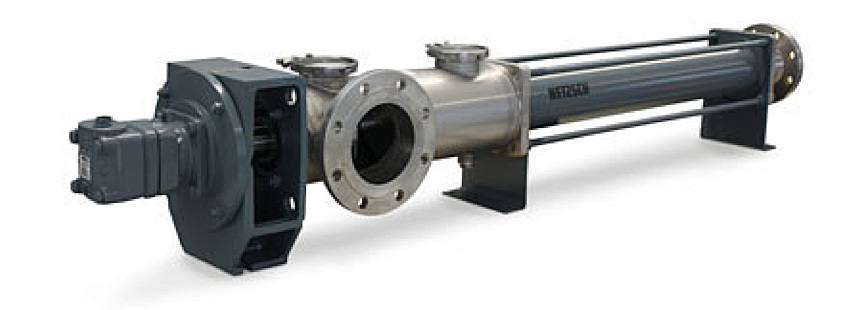Background
However, mining these resources places machines under extreme stress and can increase the high price of the raw material. The sludge of crushed, gold-bearing stone that is transported for chemical extraction, for example, is extremely abrasive and can destroy pumping systems within a few days. Adding water does make it possible to convey the product, but also increases the effort required in the gold concentration process.

Challenge
In search of alternatives, a pump from another producer was installed in a mining region on a trial basis. However, the pump housing was completely destroyed within just two days. The high abrasiveness of the gold sludge was to blame. The stone particles in the sludge behave like sandpaper, particularly at high speeds, and wear away all surfaces extremely quickly - until the system fails completely.
Solution
This effect can only be reduced by particularly smooth pumping at an economically viable volume, as further tests with a NEMO® progressing cavity pump demonstrated. To achieve a system with as long a service life as possible, despite heavy wear, the designers at NETZSCH selected tungsten carbide for the rotor. Tungsten carbide, with a scratch hardness of 9.5 on the Mohs scale, is almost as hard as diamond and is therefore scarcely affected by the grinding of the crushed stone. SBE, a nitrile material, was used for the stator. It is similarly extremely wear resistant, but also soft enough to prevent the points of contact with the rotor from wearing out too quickly. The progressing cavity pumps are also low power consumers and are easy to clean and maintain, which in turn reduces operating and maintenance costs. However, it is the durability of the pumps which is decisive when it comes to conveying gold. In the first test, the pump ran for three months without damage to the stator or rotor. The mine operator has since installed further three NEMO® pumps with an average service life of approximately 3.5 months. The service life exceeds the life cycle of earlier centrifugal pumps, which were completely worn out after three months, despite the addition of water.
ABOUT THIS COMPANY
Netzsch
For more than six decades, NETZSCH has manufactured positive displacement pumps worldwide. The NETZSCH ranges of NEMO® progressing cavity pumps and TORNADO® rotary lobe pumps are designed specifically for the most demanding pumping applications. NETZSCH pumps range in size from the industry’s smallest metering pumps to high-volume pumps for de-watering duties in the mining industry. Roger Willis Contact details
Business Field Manager Chemical, Pulp & Paper
Phone: +498638/63-0
E-Mail: info.nps@netzsch.com

























